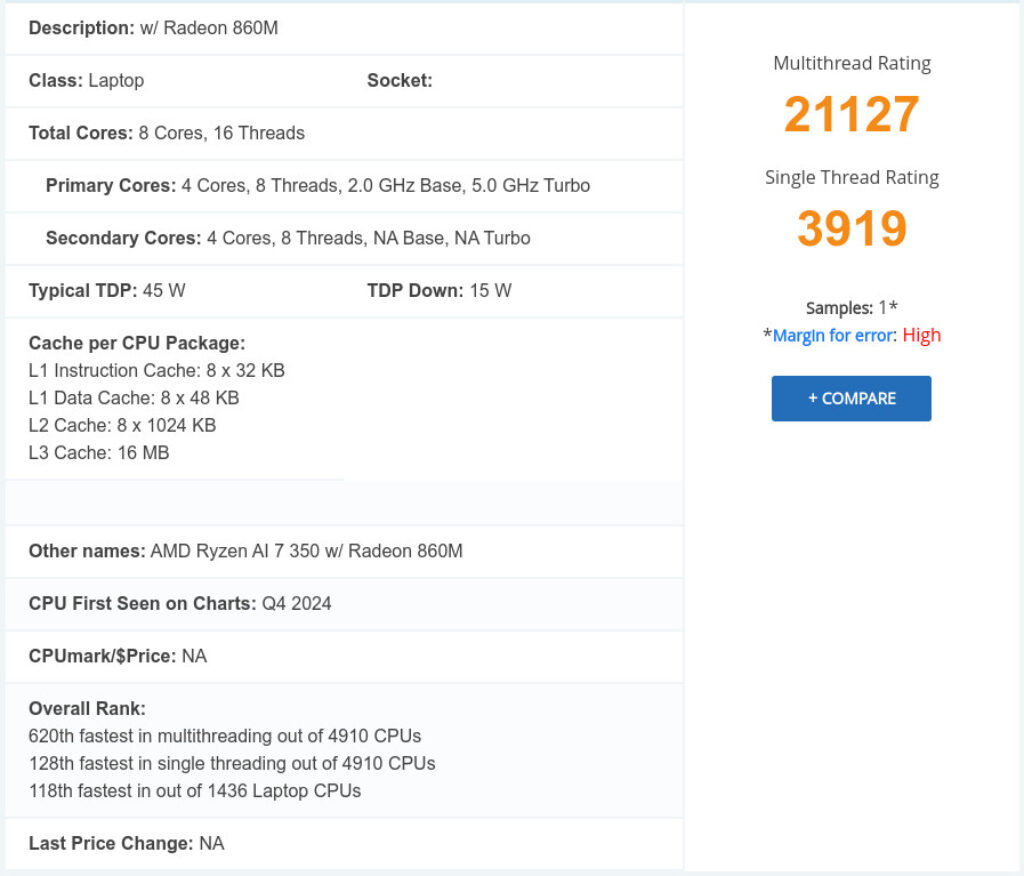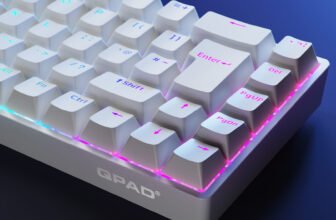AMD‘s forthcoming Ryzen AI Kraken Point APUs appear poised to reshape the market for next-generation thin-and-light laptops, with potential applications extending to gaming handhelds. While whispers about these APUs have circulated for some time, a newly surfaced PassMark benchmark provides an in-depth look at the Ryzen AI 7 350—a model that appears to signal a shift in design priorities for AMD’s mobile processors.
Benchmark Revelations: A 4+4 Configuration
The PassMark result confirms that the Ryzen AI 7 350 features a 4+4 CPU core configuration, combining AMD’s Zen 5 and Zen 5c cores. This hybrid architecture aims to balance performance and efficiency, with the Zen 5 cores focusing on high-performance tasks and the Zen 5c cores emphasizing energy efficiency. This design aligns with AMD’s strategy of optimizing battery life and thermal performance, potentially positioning these APUs as a direct response to Qualcomm’s advancements in mobile processing.


A Downgrade in Integrated Graphics
One notable departure from tradition lies in the integrated GPU (iGPU) configuration. Historically, Ryzen 7 and Ryzen 9 mobile APUs have included high-performance Radeon -80M or -90M series iGPUs. However, the Ryzen AI 7 350 features the AMD Radeon 860M, a step down from its predecessors. The naming convention aligns the 860M more closely with iGPUs found in Ryzen 5 APUs, suggesting it may deliver less graphical performance compared to previous generations.
Early benchmarks support this hypothesis. A comparison between the Radeon 760M and the Radeon 860M on PassMark shows the latter lagging behind by an average of 9.1%. It is worth noting, however, that the data pool for the 860M is currently limited to a single result, so these figures should be interpreted with caution. The potential performance gap highlights AMD’s likely focus on reducing power consumption and heat output rather than maximizing graphics performance in this iteration.
Strategic Implications for AMD
The decision to prioritize energy efficiency over graphical prowess could mark a strategic pivot for AMD. By adopting the 4+4 hybrid architecture and scaling back the iGPU, the Ryzen AI Kraken Point APUs may cater to a market segment increasingly concerned with portability and battery longevity. This approach could broaden the appeal of AMD’s APUs, particularly for devices like ultra-thin laptops and entry-level gaming handhelds, where extended battery life is critical.
Broader Market Context
This development comes at a time when competition in the mobile processor space is intensifying. Qualcomm’s latest offerings, featuring advanced efficiency cores and integrated AI capabilities, have set a high bar for competitors. AMD’s decision to adopt a heterogenous core architecture and scale back the iGPU in the Ryzen AI 7 350 appears to be a calculated response, aimed at carving out a niche in the evolving landscape of portable computing.
Our Verdict
The Ryzen AI Kraken Point APUs, led by the Ryzen AI 7 350, represent a nuanced shift in AMD’s mobile processor strategy. While the reduced iGPU performance might raise eyebrows, the emphasis on efficiency and thermal management suggests a targeted approach to addressing the needs of modern thin-and-light laptops and gaming handhelds. As more benchmarks emerge, the full potential of these APUs will become clearer, shedding light on AMD’s vision for the future of mobile computing.
Source: PassMark







